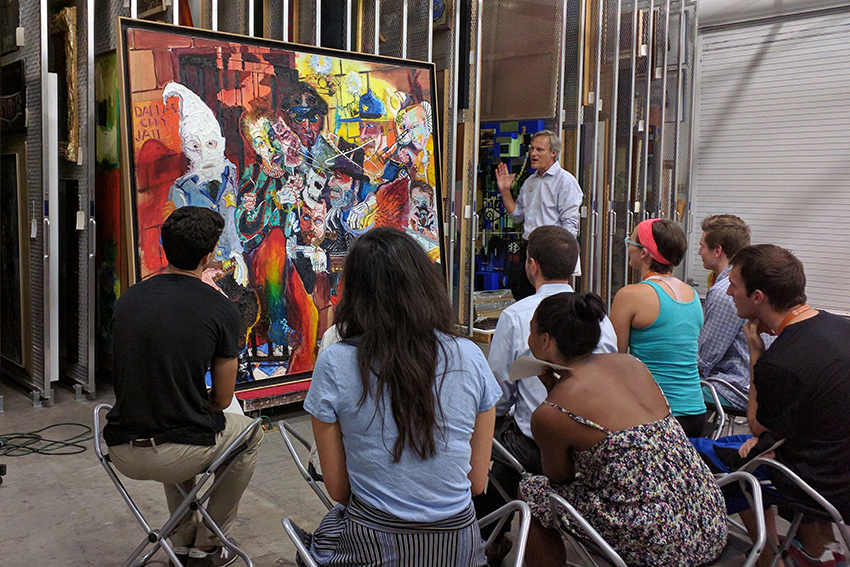The Dell Medical School partnered with the Blanton Museum of Art to teach medical students empathy through art.
Faculty members at Dell Medical collaborated with Ray Williams, the Blanton’s director of education and academic affairs, to create three two-hour experiences to teach medical students empathy, observational skills and self-care.
During the session focused on empathy, students analyzed a painting of David and Goliath shortly after David decapitated Goliath. Williams led the students in an interpretive conversation about the piece before connecting it back to clinical practice. Williams said he wanted them to empathize with the emotional trauma David must have experienced as he became a teenage killer.
“This invitation to exercise your empathetic imagination that art and fiction give us is very relevant to the clinical work in terms of being able see beyond a diagnosis and beyond an illness to a real human experience,” Williams said.
Clarissa Johnston, associate professor of medical education, developed the curriculum for the sessions with Williams. She said observational skills are some of the most useful tools to a physician, as they provide a more holistic view of patients beyond their immediate physical condition.
“Like yeah sure, someone has a rash,” Johnston said. “You see the rash. That’s not rocket science. But how someone’s walking, how someone’s dressed, how they’re carrying themselves — there are all sorts of things you can learn about their clinical conditions about their social situation.”
To teach these observational skills, Williams said he took students into a painting storage facility. After 30 minutes of intense discussion about a painting, the group left and Williams immediately asked the students everything they remembered about in the storage facility, except for the painting.
“When you’re a clinician you can’t just look at what you’re pointed to,” Williams said. “You have to have the kind of eyes that take in context and look around even when it’s not what the directions say.”
Johnston said some students were wary of these art classes before they went but afterwards were begging to know when the next class would be.
“In the sessions that I attended, everybody was completely engaged and really thought it was worthwhile,” Johnston said. “I had a couple people say, ‘Wow, I didn’t think that was going to be that valuable when I saw it on the schedule.’”
With the success of the program, she said they plan to continue it for future medical school students by incorporating new classes that will focus on topics such as end-of-life issues.
Skeptical at first, medical student Eugene Kim said he thought the classes helped prepare him to be a physician by drawing out his emotions and stimulating his mind in unexpected ways.
“Sometimes it did feel like it was a little bit outside medicine,” Skim said. “At the same time, I feel like that’s the point. It’s to provide a medium to perhaps something we are not often exposed to in medicine. I think it really brought out the human experiences the medicine often brings.”
Pre-medical dance freshman Taylor Schmuelgen said this program made her excited to go to medical school in a few years. She said this class showed her how all fields are interconnected and that any number of professions can collaborate to progress toward one goal.
“People always ask me why I’m pre-med and an art major, and this shows how art and medicine can be connected,” Schmuelgen said. “It makes me excited for a future where doctors aren’t always cold and clinical.”





















